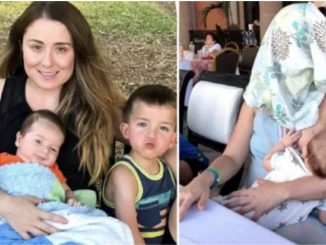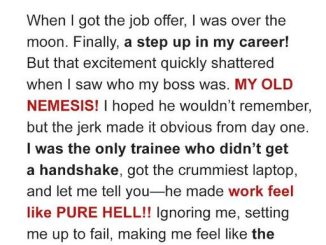Brenda Lee’s name may not be as recognizable as some of the other music stars from the 1960s but when you think of Christmas, you’ll know her song, and start humming her catchy tune, “Rockin’ Around the Christmas Tree.”
When Lee, now 78, first hit the stage, she wasn’t old enough to drive but her powerful vocals steered her “unprecedented international popularity” as the most successful female artist of the 1960s.
Lee, whose voice defied her diminutive stature at only 4 foot 9, became a fan favorite when she was only 12.
Brenda May Tarpley, born in 1944, got her start in the late 1940s, became huge in the 1950s, and over her career–that started before she left elementary school–she topped the charts 55 times, earning the title as the most successful female recording artist of the 1960s.
When Lee was only eight (according to Rolling Stone), her father, a construction worker, was killed at work and little Brenda–who then changed her last name to Lee–became the family’s primary provider.

Taking care of her younger brother, big sister, and mother–a cotton mill worker–was not a duty, but something she wanted to do. She said that she was thrilled when she made her first $20, so she could help her family: “Even at that young age, I saw that helped our life,” Lee said, adding “It put some food on the table. It helped, and I loved it.”
The Atlanta-born chanteuse, called a “pioneer of early rock and roll,” by the Georgia Encyclopedia, achieved “unprecedented international popularity in the 1960s.”
But, an incredibly humble human, Lee credits those who helped her achieve her dreams. When Christianity Today asked what she thinks about being a legend, Lee said “I don’t think of myself that way!” She continued, “I’m just a girl who’s been blessed to be doing what I’m doing, and there’s a lot of people who’ve sweated a lot of tears and put a lot of life’s work into me to be able to have my dream. So, if I’m a legend, then they’re legends, too.”
In 1956, the young girl joined country star Red Foley for a show at the Bell Auditorium near her home in Augusta, and she belted out “Jambalaya,” by Hank Williams.

She was then signed to appear on Foley’s Ozark Jubilee, a country music show, where millions of viewers fell in love with the sassy 12-year-old whose talent was developed well beyond her age.
In the same year, Lee signed with Decca Records, and the next year, she moved to Nashville, Tennessee, and fusing country with rhythm and blues–highlighted by her hiccupping vocals–she recorded early rockabilly classics like “BIGELOW 6-200,” “Little Jonah,” and “Let’s Jump the Broomstick.”
When asked if–when as a young girl–she was nervous performing in front of large crowds, she answered: “No, not really. Nobody ever told me to be nervous. The stage always felt like a hometown to me because I had been in front of people ever since I was 3 years old, singing to people. So it was a very comfortable spot for me.”
In 1957, Lee earned the nickname “Little Miss Dynamite” for her pint-sized powerhouse recording of the song “Dynamite,” and in 1958, fans heard “Rockin’ around the Christmas Tree,” a genre and generation-crossing holiday standard, released when she was only 13.
“I knew it was magical,” she told Rolling Stone.
Over the next couple of years, she charted with hits like “Sweet Nuthin’s,” “All Alone Am I,” and “Fool #1.”
Most of her songs, however, contradicted her experience as a young girl. Her mother didn’t let her date and she graduated high school not understanding the heartbreak of young love.

She was only 16 when she said “Love could be so cruel” in the song “I’m Sorry” and only 16 when she said “I want his lips to kiss me” in the song “I Want to be Wanted,” both back-to-back hits when she was still in school.
And when she turned 18, she met Ronnie Shacklett, whom she’s now been happily married to for 60 years.
Life on the road for Lee as a youngster had its difficulties. She celebrated her 12th birthday in Las Vegas and speaking with the Las Vegas Journal, Lee explained her loneliness.
“Of course, I wasn’t even allowed to walk through a casino, I was so young. So I didn’t even know what a casino looked like. They took me into the kitchen, then into the showroom. And then when my show was over, I was brought back out through the kitchen and back up to my room. Children weren’t allowed … in the casino area.” She continued, “There wasn’t anything to do in Vegas for a kid. The most fun I had was on the stage.”
Speaking on what she missed out on as a child, the award-winning Lee said, “Many times, I yearned to be with my friends rather than be out there on the road.”
Turns out she made new friends on the road, like with the music group that opened for her at a 1962 show in Germany. “I hung out with John,” she says effortlessly, speaking of John Lennon. “He was extremely intelligent, very acerbic with his jokes, just a gentle person. When I found out that they later said they were fans of my music, I was just floored.”

IMPORTANT ALERT! DEADLY DANGER! The Most Dangerous Insect In The World Has Appeared

In recent years, the United States has faced a significant and deadly threat from the giant killer wasp, often referred to as the “murder hornet.” This invasive and highly destructive insect, known as the largest and most dangerous of its kind globally, first appeared in the country in 2019 and has since continued to spread fear and havoc.
The most recent sighting of this menacing creature occurred in Washington state in 2021. This discovery alarmed the region, as the “murder hornet” exhibited aggressive behavior, attacking anything that crossed its path. Measuring an imposing 4.4 centimeters in length, this insect was detected on August 11, just 3.2 kilometers from where it was first identified in December 2019, near Blaine, Washington, according to the Washington State Department of Agriculture (WSDA).

These hornets are notorious for their ability to decimate entire beehives. Their formidable mandibles allow them to kill and decapitate thousands of bees, taking over the hive and defending it as their own. They ruthlessly tear apart the brood to feed their offspring, leaving devastation in their wake. This is especially concerning given the critical role bees play in pollination and maintaining ecological balance.
Adding to the danger, the venom from a single sting of a “murder hornet” has the potential to kill a human. These hornets inject a significant amount of venom into their prey. While fatalities from a single sting are rare, the risk remains significant and alarming.
In response to this development, the WSDA is taking proactive measures to combat the threat. Live traps are being set up in the area, and entomologists plan to tag captured wasps to track them back to their nests. The proximity of this sighting to the US-Canada border has also prompted officials in that region to install additional traps to prevent the further spread of these deadly insects.
The emergence and spread of the giant killer wasp, or “murder hornet,” serves as a stark reminder of the threats nature can pose. With its potential to devastate bee populations and harm humans, efforts to monitor, control, and mitigate this invasive species are crucial to safeguarding both ecosystems and public safety. The ongoing efforts by state and regional authorities highlight the importance of swift and effective action in managing invasive species to protect the environment and human health.



Leave a Reply